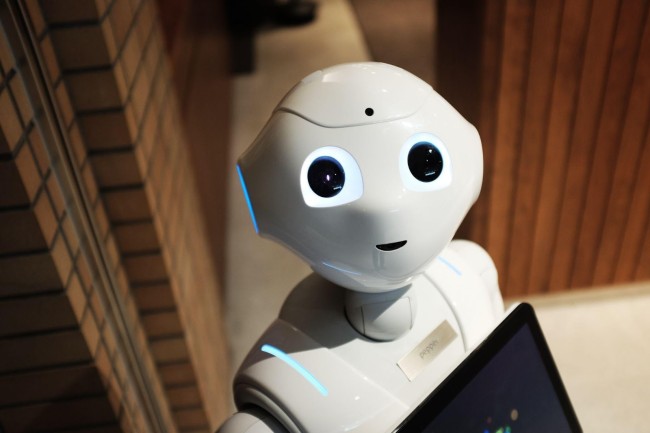The world has seen the healthcare industry improving exponentially over the years. This is mainly due to the increasing success of technology, especially Artificial Intelligence (AI).
Now, computer vision is being used in this industry, and it has the potential to empower a variety of applications that could save patients’ lives more efficiently.
What is Computer Vision?
Computer vision is an artificial intelligence technology that deals with visual tasks such as detection, classification, segmentation, prediction, and recognition using algorithms.
It performs various tasks like object detection, data labeling, optical character recognition, etc. The tasks involved in computer vision are basically gathering and processing images for data and then extracting the required features for one’s own use.
How is it Connected with Healthcare?
Computer vision allows systems to identify patterns and detect abnormalities in the healthcare industry. The number of applications in the medical industry is increasing every day.
They’re currently part of the standard procedures for diagnosing and treating diseases and disorders. To train the system and detect abnormalities in the dataset of visual data for ruling out the diagnosis, models use iterative processes.
Applications of Computer Vision in Healthcare
Below are some of the most apparent applications of computer vision in healthcare:
1. Image Analysis
Computer vision can detect patterns in an image a human eye would miss. Doctors have to interpret an increasing amount of medical data to conduct diagnoses. Computer vision can help speed up the process while also improving the accuracy of the diagnosis.
Human workers can accomplish more work in less time with the help of computer vision and the operations it streamlines. The accuracy computer vision models provide allows doctors to dedicate more time and resources to give the best possible assistance and care to their patients.
However, as advanced as technology has become, there’s still a need for human intervention. So, doctors remain an important element of the medical system, at least for the time being.
2. Evolution of Illness
Computer vision techniques can be used to analyze the development of different kinds of illnesses. It also helps physicians analyze the impact of treatment, and diagnose the illness’s main cause. This information can be applied to develop new treatments or improved approaches to prevention and cure.
3. Reducing Human Error
Despite the rapid advancement of medical technology, as long as there are humans in the loop, there’s room for human error. For example, there are still incidences of patients being poorly diagnosed, receiving irrelevant treatment and medications.
Computer vision-aided systems in hospitals can easily solve this issue. This sort of computer vision may detect misidentifications effectively and allow you to make database updates based on them.
4. Injury Prevention
Healthcare personnel and patients are directly exposed to injuries or infections that can be avoided. In fact, people working in hospitals are more likely to get infected compared to others. Computer vision helps prevent such injuries through timely detection.
It can, for example, identify when someone faints and notify healthcare workers of the incident so they can help them on time. It is not an exclusion for the personnel to forget to install the correct safety equipment or disinfect the tools, which may increase the number of hospital accidents. Computer vision systems detect these flaws and remind employees to follow protocol.
5. Timely Detection of Illness
Most lethal disorders like cancer should be diagnosed early in order to be treated. Because of its finely crafted pattern-recognition ability, computer vision helps in the diagnosis of early symptoms. This could help save lives in the long run through quick and on-time treatment.
6. Streamlining Processes
In medicine, computer vision can significantly shorten the time doctors spend analyzing reports and medical images.
It gives them more time to interact with their patients and provide helpful consultations. Through its life-saving uses, computer vision in healthcare aids physicians in providing better and more effective treatment.
7. Health Monitoring
Doctors can examine health and fitness statistics through computer vision to help patients make quick and effective treatment choices. It is now used by healthcare facilities to record the amount of blood loss during surgeries, particularly C-sections.
If the blood loss reaches critical levels, this can help with emergency procedures. Additionally, computer vision technologies may also be used to determine a person’s body fat percentage using photographs captured with conventional cameras.
8. Tumor Detection
Computer vision plays a significant role in tumor detection with increased accuracy. If not treated at the time, brain tumors spread rapidly to other regions of the brain and spinal cord.
So making early discoveries is important to the patient’s survival. Medical experts can apply computer vision tools to accelerate and simplify detection.
Final Thoughts
Computer vision does not cease to benefit the medical sector. Several types of research in dermatology, radiology, and pathology have shown encouraging results in challenging medical diagnostics tasks.
The applications of machine learning and computer vision technologies we’ve seen are really just a little fraction of what is still being developed. However, many medical organizations are still administered in a conventional way.
So, there’s a promising prospect for computer vision to further advance different aspects of medicine. Computer vision applications significantly ease the burden and time required to diagnose health issues or the effects of medication.
They cannot, however, take the role of physicians and medical researchers, which is why the future for computer vision in healthcare is not deprived of doctors and their involvement in diagnoses and treatment.
